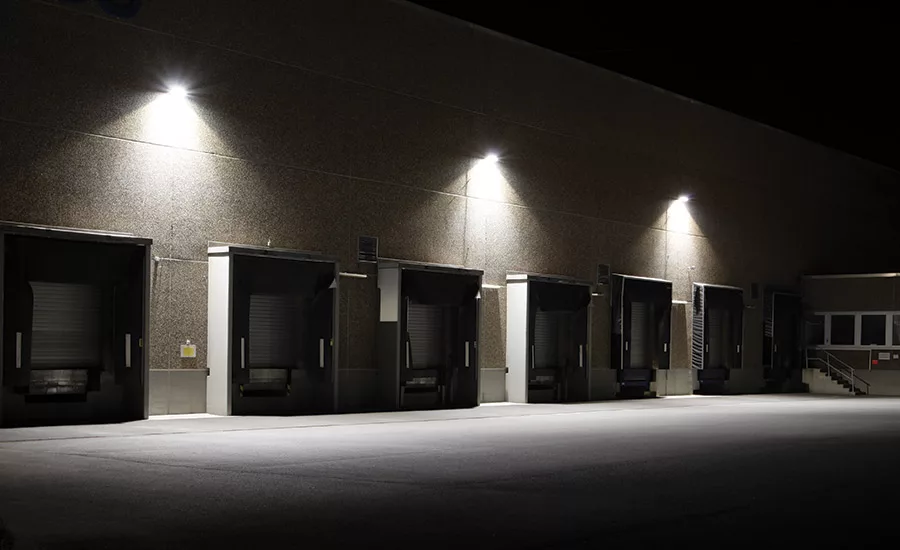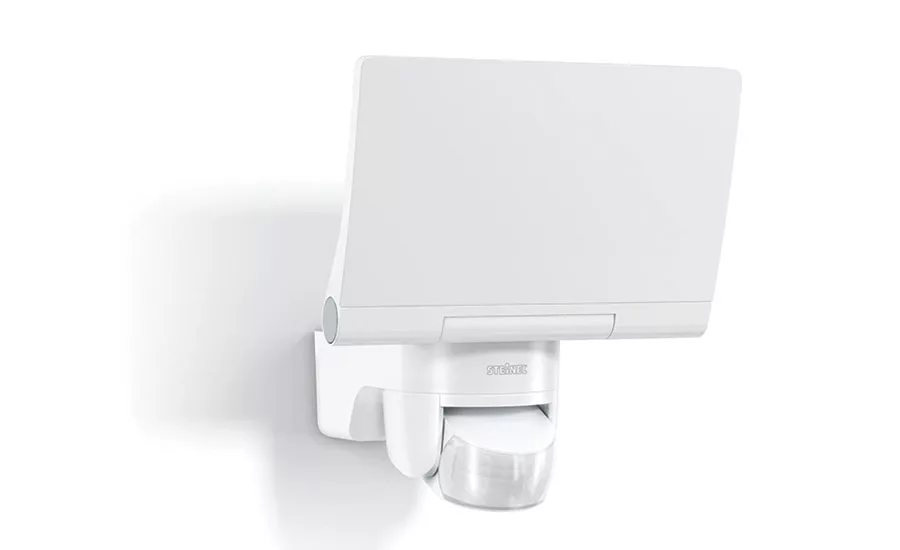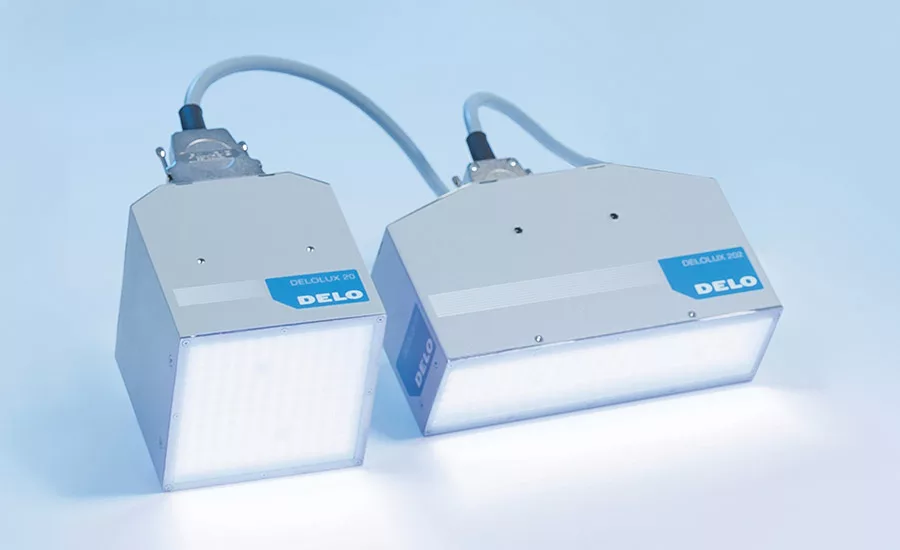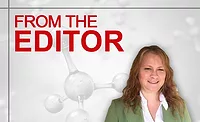Case Study
Acrylate Adhesives Help Provide a Light in the Dark
Light-curing acrylate adhesives are helping an outdoor lighting manufacturer achieve permanent bonds and reliable sealing, even in challenging environments.


XLED home 2 sensor-switched outdoor floodlights provide brightness and energy efficiency.
(Image courtesy of STEINEL.)

LED area lamps such as DELOLUX 20 and DELOLUX 202 are well-suited for large bonding areas.
(Image courtesy of DELO.)
Whether it be rain, snow, sleet, or hail, outdoor lighting is fully exposed to the elements. Adhesives help outdoor lighting remain sustainable and well-functioning with permanent bonds and reliable sealing. In a residential neighborhood, seeing and being seen begins in the driveway. LED floodlights not only light the way for us and our cars, but also act as a deterrent to uninvited guests.
Established in Germany in 1959, STEINEL is a leading worldwide provider of sensor-based light control. STEINEL lighting features opal optics; floodlights offer infrared sensors, with a 14-m range and a high-performance LED panel that can swivel 180°. These LED floodlights reach a brightness of up to 1,600 lm with a power consumption of only 20 W. In part due to this efficiency of 80 lm/W, a service life of up to 50,000 hours (L70B10 according to LM80) can be achieved.
New Product Development
STEINEL recently developed its XLED home 2 line of outdoor floodlights, which are designed to be used on the front and side entrances of buildings, as well as around perimeters to illuminate driveways and other more secluded areas. When the XLED home 2 and XLED home 2XL outdoor floodlights were designed, the polymethyl methacrylate (PMMA) front disk on the lamp housing was supposed to be fastened with a thermally conductive PA6 composite material. In previous models, STEINEL had used a screw connection in combination with a seal. To simplify this complex process, STEINEL wanted to come up with a different method to keep the disk affixed.
Through some research, STEINEL considered several joining options, including laser welding, tape, and liquid adhesives. During the design process, it was determined that the laser method would not work due to the different melting points of both materials involved. This led STEINEL to opt for bonding with adhesives. With this method, not only is money saved on screws and seals, but the need for new tools for the seals that would have been created by the new geometries was eliminated.
Meeting the Required Specs
Once STEINEL decided to use an adhesive for its bonding needs, it was important to define the exact requirements that the adhesive needed to meet. For example, the pull-off force of the LED disk needed to be at least 80 N, and the bond needed to withstand an impact test of 0.35 Nm.
The service temperature range of the adhesive had to be able to withstand full exposure to sun and UV rays. In addition, the LED floodlights are exposed to wind and precipitation, requiring the lamp to fulfill class IP 44 protection against solid objects that are bigger than 1 mm and water splashing from all directions. STEINEL also required the adhesive to be suitable for an automated production process, since several hundred thousand units of these floodlights are produced annually.
Initially, the STEINEL ramp-up competence center in Switzerland considered using double-sided adhesive tape, but it did not fulfill the requirements. Engineers decided that their best option would be to use a liquid adhesive for this application.
Because STEINEL required a large production volume, the company consulted with Credimex, a provider of adhesive and sealing solutions for industrial production. Credimex proposed using a light-curing product that would make short cycle times possible and prevent a batch process that would require substantial storage capacity. During the selection process, an adhesive-friendly design of the bonding geometry, product selection, laboratory tests, and definition of the production process were all considered.
Light-curing acrylates were selected for use in this application due to the medium thermal and mechanical adhesion and sealing requirements, as well as the translucent PMMA that enables light curing. This type of adhesive is a better plastic all-rounder in comparison to light-curing epoxies. In addition, its high elasticity makes it very suitable for sealing.
Following laboratory tests with four different adhesives, STEINEL decided to use the UV- and light-curing acrylate DELO PHOTOBOND AD494, an adhesive that is also used in the automotive industry for PMMA dashboard bonding. During the production process, the adhesive is dispensed automatically before the cover glass and housing are joined. Due to the size of the rectangular adhesive bead, which measures 175 x 103 mm or 175 x 122 mm, respectively, two DELOLUX 20/400-type LED area lamps are used to cure the adhesive completely within 15 sec, making it possible to immediately continue processing the outdoor floodlights.
Meeting High Demand
The use of the light-curing acrylate adhesive enables STEINEL to achieve the short cycle times that are required for efficient high-volume production. The company reports that this solution makes it well-equipped to deal with the ever-increasing demand for outdoor lighting.
For more information, visit www.delo-adhesives.com and www.credimex.ch. STEINEL can be found online at www.steinel.de.
Looking for a reprint of this article?
From high-res PDFs to custom plaques, order your copy today!






